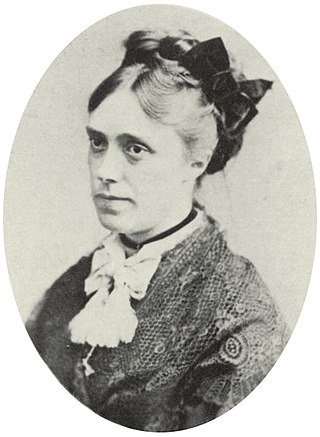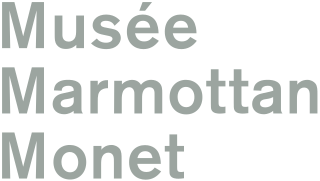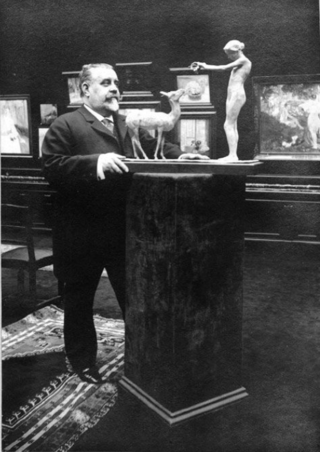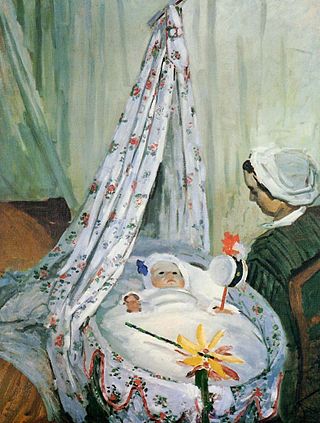
Oscar-Claude Monet was a French painter and founder of impressionist painting who is seen as a key precursor to modernism, especially in his attempts to paint nature as he perceived it. During his long career, he was the most consistent and prolific practitioner of impressionism's philosophy of expressing one's perceptions before nature, especially as applied to plein air (outdoor) landscape painting. The term "Impressionism" is derived from the title of his painting Impression, soleil levant, exhibited in 1874 initiated by Monet and his associates as an alternative to the Salon.

Impressionism was a 19th-century art movement characterized by relatively small, thin, yet visible brush strokes, open composition, emphasis on accurate depiction of light in its changing qualities, ordinary subject matter, unusual visual angles, and inclusion of movement as a crucial element of human perception and experience. Impressionism originated with a group of Paris-based artists whose independent exhibitions brought them to prominence during the 1870s and 1880s.

Camille-Léonie Doncieux was the first wife of French painter Claude Monet, with whom she had two sons. She was the subject of a number of paintings by Monet, as well as Pierre-Auguste Renoir and Édouard Manet.

Theodore Robinson was an American painter best known for his Impressionist landscapes. He was one of the first American artists to take up Impressionism in the late 1880s, visiting Giverny and developing a close friendship with Claude Monet. Several of his works are considered masterpieces of American Impressionism.

Musée Marmottan Monet is an art museum in Paris, France, dedicated to artist Claude Monet. The collection features over three hundred Impressionist and Post-Impressionist paintings by Claude Monet, including his 1872 Impression, Sunrise. The museum's fame is the result of a donation in 1966 by Michel Monet, Claude's second son and only heir.

The Musée de l'Orangerie is an art gallery of impressionist and post-impressionist paintings located in the west corner of the Tuileries Garden next to the Place de la Concorde in Paris. The museum is most famous as the permanent home of eight large Water Lilies murals by Claude Monet, and also contains works by Paul Cézanne, Henri Matisse, Amedeo Modigliani, Pablo Picasso, Pierre-Auguste Renoir, Henri Rousseau, Alfred Sisley, Chaïm Soutine, Maurice Utrillo, and others.

Haystacks is the common English title for a series of impressionist paintings by Claude Monet. The principal subject of each painting in the series is stacks of harvested wheat. The title refers primarily to a twenty-five canvas series which Monet began near the end of the summer of 1890 and continued through the following spring, though Monet also produced five earlier paintings using this same stack subject.

Georges Petit was a French art dealer, a key figure in the Paris art world and an important promoter and cultivator of Impressionist artists.

Water Lilies is a series of approximately 250 oil paintings by French Impressionist Claude Monet (1840–1926). The paintings depict his flower garden at his home in Giverny, and were the main focus of his artistic production during the last thirty years of his life. Many of the works were painted while Monet suffered from cataracts.

Alice Raingo Hoschedé Monet was the wife of department store magnate and art collector Ernest Hoschedé and later of the Impressionist painter Claude Monet.

Le Bassin Aux Nymphéas is one of the series of Water Lilies paintings by French impressionist artist Claude Monet. It is an oil on canvas painting measuring 300x100 cm.

The Garden at Sainte-Adresse is a painting by the French impressionist painter Claude Monet.. The painting was acquired by the Metropolitan Museum of Art after an auction sale at Christie's in December 1967, under the French title La terrasse à Sainte-Adresse. The painting was exhibited at the 4th Impressionist exhibition, Paris, April 10–May 11, 1879, as no. 157 under the title Jardin à Sainte-Adresse.

The Regatta at Sainte-Adresse is an oil-on-canvas painting by the impressionist painter Claude Monet. It was painted in 1867 and is owned by the Metropolitan Museum of Art.

Blanche Hoschedé Monet was a French painter who was both the stepdaughter and the daughter-in-law of Claude Monet.

The Magpie is an oil-on-canvas landscape painting by the French Impressionist Claude Monet, created during the winter of 1868–1869 near the commune of Étretat in Normandy. Monet's patron, Louis Joachim Gaudibert, helped arrange a house in Étretat for Monet's girlfriend Camille Doncieux and their newborn son, allowing Monet to paint in relative comfort, surrounded by his family.

Woman with a Parasol – Madame Monet and Her Son, sometimes known as The Stroll is an oil-on-canvas painting by Claude Monet from 1875. The Impressionist work depicts his wife Camille Monet and their son Jean Monet in the period from 1871 to 1877 while they were living in Argenteuil, capturing a moment on a stroll on a windy summer's day.

Jean Monet was the eldest son of French Impressionist artist Claude Monet and Camille Doncieux Monet and the brother of Michel Monet. He was the subject of several paintings by his father and married his step-sister, Blanche Hoschedé.

Michel Monet was the second son of Claude Monet and Camille Doncieux Monet.

Interior, after Dinner is an oil-on-canvas painting by French artist Claude Monet (1840–1926) created during the winter of 1868-1869, a productive time for the painter. He spent the winter in Étretat with his girlfriend Camille Doncieux and their newborn son.



















